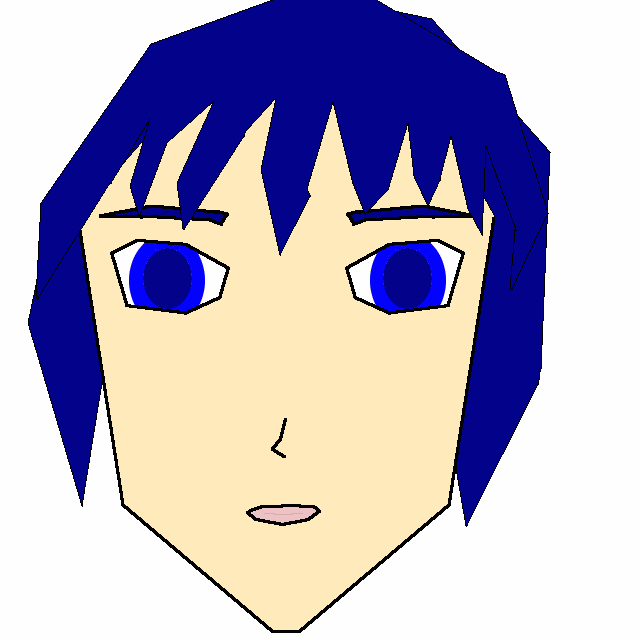
Greetings, yet another Making of Javantea's Fate. Since this is 301, I decided to give you a lesson. My decision is also due to the fine lesson that I learned today. I wasted most of the day playing video games. However, I got a little bit motivated after dinner to create something that might be of use to Hack Mars. I attempted to work on Hack Mars and actually got two or three models made in Milkshape 3d. But they sucked. So the inevitable happened: video games. Err, actually video games happened both before and after my lack of 3d modelling ability showed its ugly face, but whatever. After dinner, I opened up GIMP. I created the above picture in The GIMP after a bit of learning happened.
Here is the lesson: vector graphics and raster graphics are different, but similar. One can see this in the above picture. First off, terminology. Raster is just a technical word for pixel graphics. It means that I have a canvas and I have control over the pixels. The GIMP is made for creating and modifying raster graphics. XFig on the other hand, is made for creating and modifying vector graphics. Vector graphics is a technical term for graphics made with primitives such as lines, curves, ovals, text, fill, and points. That means that I have control over the nodes of the lines. Vector graphics are scalable losslessly and give the artist object-oriented control over the graphics. It makes sense for an artist who is creating a very complex line-art project to work in vector graphics. Well, I've been doing that for many years and this time I decided to learn something. I started working on this in The GIMP. It was actually pretty decent. I didn't like the idea of pixels, but I decided to brush it off.
You see, when a person finishes a vector graphics drawing, s/he must export it to raster graphics. One thign that is better about vector graphics is the anti-aliasing that can be done cheaply. For the previous MoJF, I used XFig and exported at 200%. Then I scaled it by 50% with anti-aliasing and it looks better than this picture, right? No jaggies and it was cheaper. What do I mean by cheaper? I didn't actually pay for tonight's drawing (other than a penny of electricity and a buck for half a salad). I mean cheaper by way of RAM. Raster graphics are very 'expensive' in RAM. Digital photographers need a lot of RAM, a Gigabyte is not excessive for good speed working heavily with a bunch of megapixel images. Vector graphics does this very cheaply. In fact, 128 MB is plenty if you only do vector graphics. So what did I do that was special for this image? I used layers. I used one layer for the face, one layer for the hair in the back, and one layer for the hair in the front. They were transparent except for their part. What did I learn exactly? Vector graphics in a raster program can be done, but seriously lacks the features of vector graphics in a vector graphics program like XFig. For example, anti-aliasing. Another would be to change the hair slightly. I would also like easier symmetry. Symmetry is very easy in vector graphics, and not very easy in raster graphics. It's possible, but you get my idea.
What's the real reason I did this? No, it's not a anarchist plot. It's a goal of mine to get good looking skins for Hack Mars. I know that I cannot do that with vector graphics alone. In fact, it's been kinda hard for me to create good vector graphics-based skins. So I wanted to mix it up. The plan is that with these ideas, I can just go wild in XFig and make ugly skins. Then I can have a revolution when I go into The GIMP and shade them, anti-alias them, and make them pretty. Then, Hack Mars will be in motion again. There's a lot of content, plot, and programming between now and the end of Hack Mars. I plan to do it slowly but surely.
-
Leave a Reply





Comments: 0
Leave a reply »